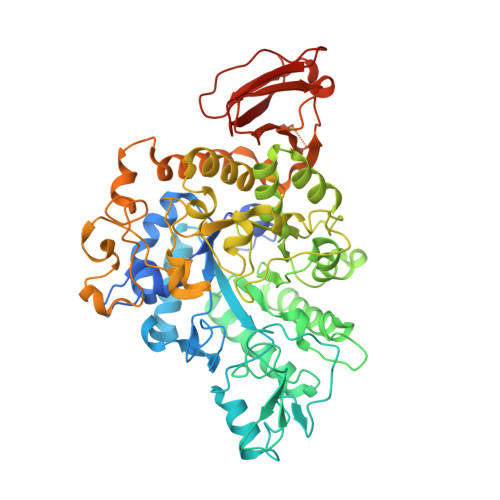The Structure of the Mycobacterium Smegmatis Trehalose Synthase Reveals an Unusual Active Site Configuration and Acarbose-Binding Mode.
Caner, S., Nguyen, N., Aguda, A., Zhang, R., Pan, Y.T., Withers, S.G., Brayer, G.D.(2013) Glycobiology 23: 1075
- PubMed: 23735230
- DOI: https://doi.org/10.1093/glycob/cwt044
- Primary Citation of Related Structures:
3ZO9, 3ZOA - PubMed Abstract:
Trehalose synthase (TreS) catalyzes the reversible conversion of maltose into trehalose in mycobacteria as one of three biosynthetic pathways to this nonreducing disaccharide. Given the importance of trehalose to survival of mycobacteria, there has been considerable interest in understanding the enzymes involved in its production; indeed the structures of the key enzymes in the other two pathways have already been determined. Herein, we present the first structure of TreS from Mycobacterium smegmatis, thereby providing insights into the catalytic machinery involved in this intriguing intramolecular reaction. This structure, which is of interest both mechanistically and as a potential pharmaceutical target, reveals a narrow and enclosed active site pocket within which intramolecular substrate rearrangements can occur. We also present the structure of a complex of TreS with acarbose, revealing a hitherto unsuspected oligosaccharide-binding site within the C-terminal domain. This may well provide an anchor point for the association of TreS with glycogen, thereby enhancing its role in glycogen biosynthesis and degradation.
Organizational Affiliation:
Department of Biochemistry and Molecular Biology, University of British Columbia, British Columbia, Canada.




















